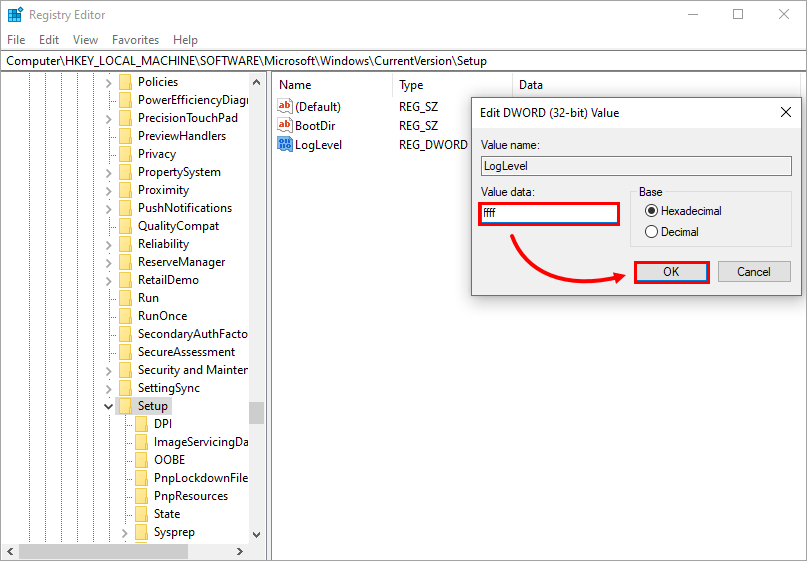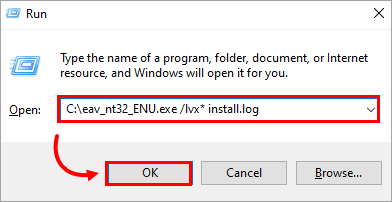Issue
- An install error log has been requested by ESET Technical Support
- Your ESET product ends prematurely, ends with a specific error message, or performs a rollback to a previous system state
Details
Click to expand
This log file can then be sent to ESET Technical Support to troubleshoot the issue more effectively. In addition, a properly configured setupapi.log file created by Microsoft Windows can also be used to provide more information about the problem.
Solution
- Configure the verbosity of setupapi.app.log and setupapi.dev.log
- Run the installation with the special parameter and create the ESET install.log file
- Revert the verbosity value
- Respond to ESET Technical Support
I. Configure the verbosity of setupapi.app.log and setupapi.dev.log
-
Open Registry Editor. Click Start, type
Regeditand press the Enter key. -
Navigate to
HKEY_LOCAL_MACHINE\Software\Microsoft\Windows\CurrentVersion\Setupand copy the LogLevel value to a newly created text file. You will need to set the original value back. -
Type ffff into Value data to set the LogLevel value to 0x0000FFFF. Click OK.

Figure 1-1
II. Run the installation with the special parameter and create the ESET install.log file
-
Download the offline installer for your product. Determine which installation package to download. Save the file to your Desktop.
-
Click Start, type
Runand press the Enter key. -
Click Browse and navigate to the folder containing the installer file (for example,
eav_nt32_ENU.exe). Select All Files from the Files of type drop-down menu. Double-click the installer file. -
The install path will be inserted into the Run window. Type (including a preceding space)
/lvx* install.logat the end of the install path, and click OK.
Figure 2-1 -
Finish the installation as normal, or proceed until you encounter any errors. After the installation completes or fails, collect the following logs:
Windows Server and Windows 10C:\WINDOWS\INF\setupapi.app.logC:\WINDOWS\INF\setupapi.dev.log
Install log for all Windows Operating systems
(only .msi installers)Install.logThis log will be located in the same folder as the ESET installer (.msi) file
III. Revert the verbosity value
-
Open Registry Editor again and navigate to
HKEY_LOCAL_MACHINE\Software\Microsoft\Windows\CurrentVersion\Setup. -
Set the LogLevel value to its original value.
IV. Respond to ESET Technical Support
If you have already opened an ESET Technical Support request, respond to the email and attach the log file that you just generated.
If you have not yet contacted ESET Technical Support, open a case. Be sure to attach the .log files to your email to ESET Technical Support.
We recommend compressing the files into a .zip or .rar archive before attaching. We will review the files and advise you of the best course of action.